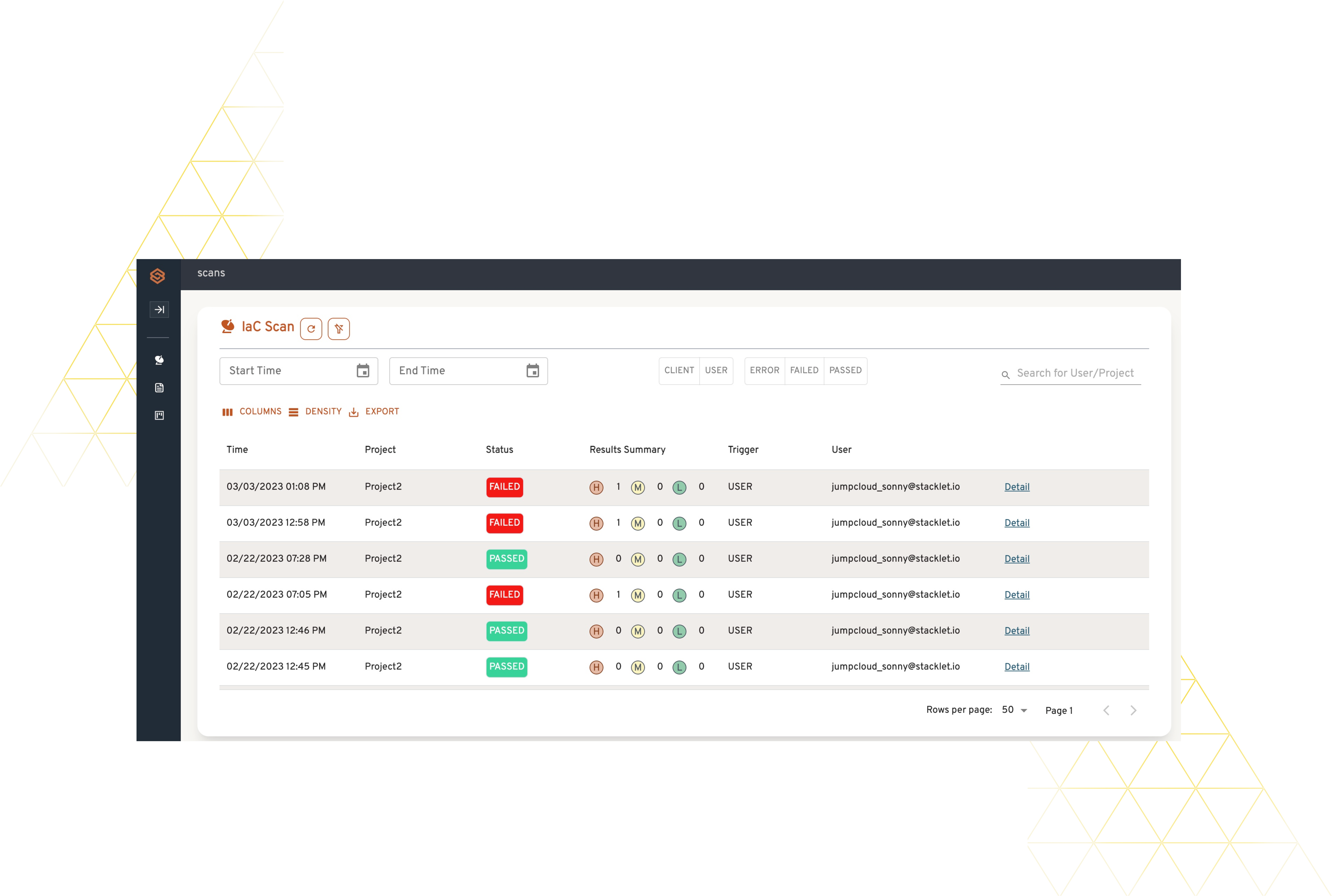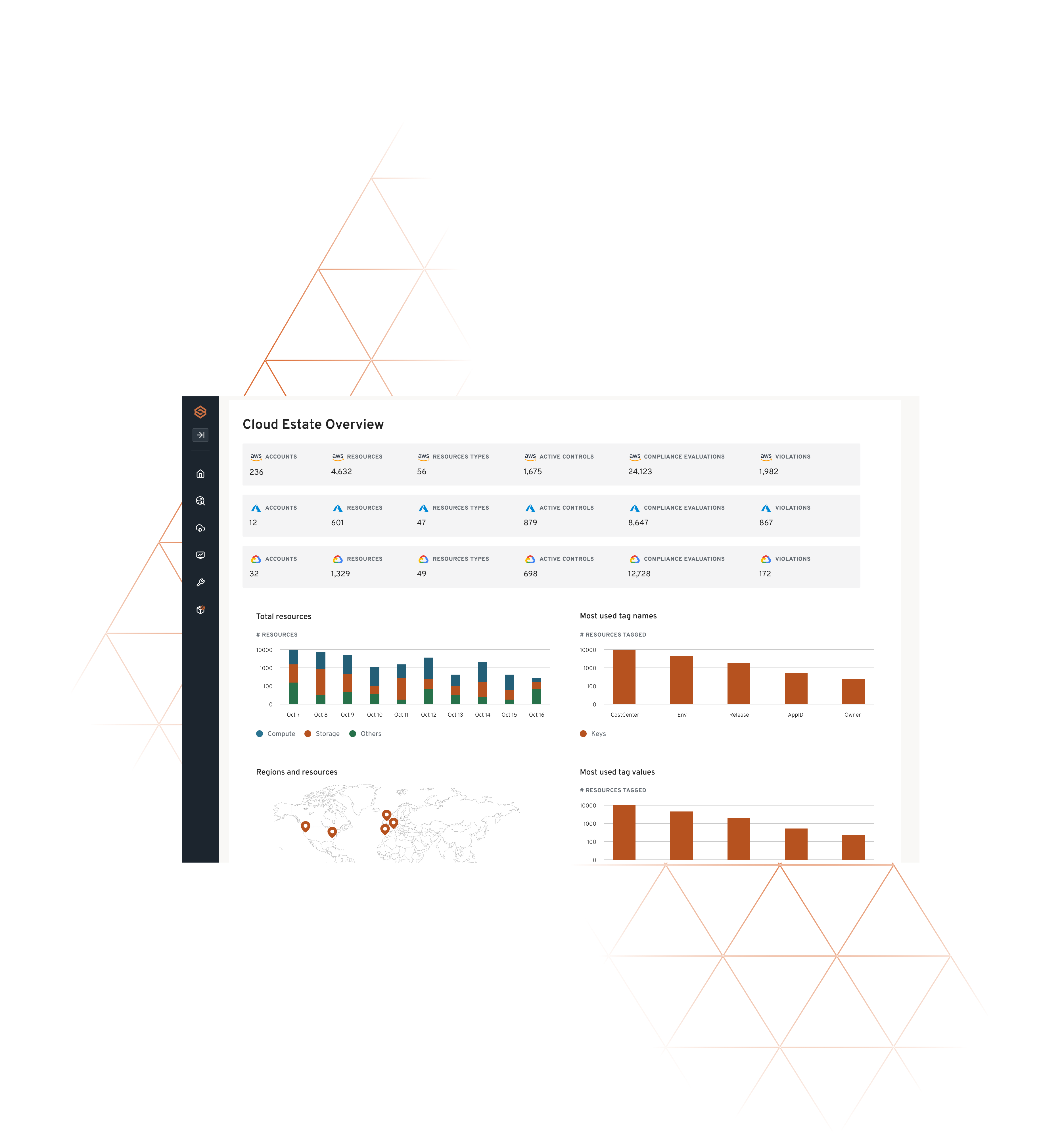STACKLET PRODUCT
Stacklet IaC Governance
Empower your DevOps and development teams to easily fix cloud governance issues earlier in the infrastructure lifecycle.


REDUCE RISK. BOOST PRODUCTIVITY. CONTROL COSTS.
Preventative Guardrails for IaC
Stacklet IaC Governance helps organizations prevent issues by implementing guardrails for their infrastructure code across developer workstations, code reviews, CI pipelines, and deployment pipelines. Compared to traditional enforcement mechanisms, these guardrails speed deployment and boost team productivity. Now available via a free public preview, Stacklet IaC Governance enables you to enforce governance policies for security, compliance, operational best practices, and cost optimization. This solution offers the same user experience and Cloud Custodian policy vocabulary as Stacklet’s core platform.
Key Capabilities
Codify and Automate Policy Enforcement
IaC Governance via Code
Codify and automate IaC scanning for security, compliance, or cost control violations. Automatically provide in-line remediation recommendations for developers or DevOps engineers to find and fix issues quickly.
.png)
.png)
REDUCE COMPLEXITY
Simple, Declarative Policy Language
Leverage a policy language that is highly expressive, human-readable, and requires ten times fewer lines of code than traditional tools. Use a single language construct to query, filter, and get remediation recommendations.
.png)
.png)
SPEED DEPLOYMENT. REDUCE ALERT STORMS.
Contextual Exception Management
Easily create and manage policy exceptions to avoid error storms and speed deployment of critical business applications. For example, create policy exceptions for different workload types, application groups, and business units.
.png)
.png)
EMBED POLICIES ACROSS THE LIFECYCLE
Multi-Stage Policy Enforcement
Apply security, compliance, operations, and cost control policies across your infrastructure lifecycle. Check policies and provide remediation recommendations at the pre-commit stage on the developer workstation, the pre-merge stage in the CI pipeline, or the pre-deploy stage in the CD pipeline.
.png)
.png)
SCALE AND IMPROVE IAC GOVERNANCE
Designed for Enterprise Use
Accelerate IaC governance with a central management and reporting console. Manage policies, create exceptions, and view policy enforcement dashboards to continuously improve your posture and reduce friction for DevOps teams.


Stacklet IaC Governance Benefits

Reduce risk, control costs, and boost team productivity
Identify and fix security, compliance, and cost-related issues from the start of the infrastructure code lifecycle.
.png)
Empower the DevOps and development teams to fix issues
Access in-line remediation recommendations for non-compliant code. Provide context for code reviewers on the exact parts of a pull request that are non-compliant.
.png)
Eliminate compliance hoops and alert fatigue
Use contextual exception management and tracking to create exceptions for different workload types, application groups, and business units.
.png)
Accelerate enterprise adoption of IaC governance
Leverage a rapidly growing library of out-of-the-box policies and use a simple, declarative YAML language for developing your own. Use centralized reporting and SSO to improve control and access.
SIMPLIFY AND UNIFY CLOUD GOVERNANCE
Industry-First, Full Cycle Cloud Governance Platform
Stacklet’s Governance as Code Platform allows organizations to visualize, codify, and automate all aspects of cloud governance, including cost, operations, security, and compliance. With the availability of Stacklet IaC Governance, Stacklet now provides a single declarative language, toolset, and workflows to enforce governance of your entire cloud infrastructure code lifecycle. This reduces the operational complexity of learning and implementing multiple tools and workflows.


"Stacklet IaC Governance aims to eliminate this devilish choice by building declarative guardrails into the IaC code. This makes developers happy, as they no longer need to figure out what governance rules are relevant to their infrastructure code and how to implement them. It also makes DevSecOps folks happy as they can create a scalable and consistent governance framework that minimizes hidden risk across the infrastructure life cycle"
